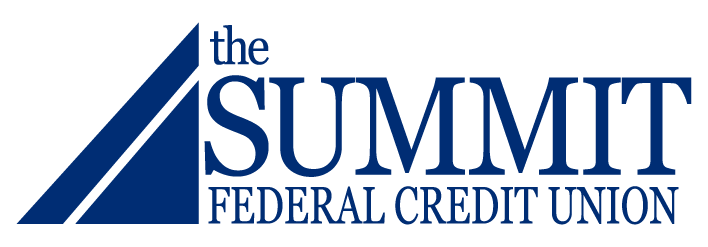March 24, 2022
Categories: Education & Security, Financial Planning, Loans, Youth Accounts

By Dawn Kellogg
Congratulations! Your child has just been accepted to the university of their choice! You cry happy tears, knowing that the next exciting chapter of their life is about to unfold. Then, reality sets in and, possibly, anxiety as you think about how much a degree costs.
You might have been setting aside money in a college fund for years, but there will still be expenses that need to be covered.
Chances are you or your child are going to need a loan, but where to start?
Student loans can be a form of “good debt” – an investment that generates not only return in the form of human capital, but also in financial return with stronger earning power.
You can borrow from any lender that you want: federal or private. But it’s really important to understand how student loans work and how to get the most out of them before you borrow.
How do Student Loans Differ from Other Types of Loans?
Student loans are designed specifically for funding education. But they differ from other types of loans.
Often, student loans are less expensive than other loans for which you might qualify.
Federal Student Loans, offered through the US Government, are borrower-friendly, affordable, and easy to qualify for. Interest rates are relatively low, and are fixed for new borrowers (so no nasty surprises regarding interest rates); interest costs might be subsidized for some students; student loans are generally low-risk for lenders (lenders view a degree as an indication of ability to repay your loan).
Federal student loans generally don’t require any credit history, so a student loan is most likely the first loan for which young people can get approval. That said, student loans can help you establish credit, so it is important to remember to repay the loan on time so you can more easily qualify for other loans in the future (mortgages, car loans, etc.)
After borrowing everything you can with government loans, you can turn to private lenders if you still need more funds. Many financial institutions, including The Summit, offer student loans. Click here to check out our student loan options.
With a private lender, you will need to qualify for the loan (have good credit and sufficient income to repay the loan). Many students don’t have this, so a parent or someone with good credit will apply for or co-sign the loan with the student, which makes both parties 100% responsible for repaying the loan.
While federal loans have fixed interest rates, private loans can have variable rates.
Types of Student Loans
Here are the most common types of loans available through the US Government:
Stafford Loans – easy to qualify for, these loans offer more money than a Perkins Loan. Interest costs may be subsidized, and they are available for both undergrad and grad students.
PLUS (Parent Loans for Undergraduate Students) Loans – resemble a private loan in that they require a credit review and payment begins soon after disbursement, but they are federal loans. These loans go to parents, which allows them to cover expenses for their children.
Consolidation Loans – combine multiple student loans into a single loan. Although this offers a simpler repayment option (one payment instead of many), if you decide to mix federal loans with private loans, you could lose valuable benefits from federal student loans.
Income Share Agreement (ISA) – provides students with funding while they are in school. When they leave school, they pay a fixed percentage of their income to the lender for a fixed number of years. The beauty of this type of loan, means that you repay what you can afford, versus an amount set for you.
Where to start?
- Begin with your school’s financial aid office and ask what types of aid are available. Be sure to ask about grants and scholarships.
- Fill out the Free Application for Federal Student Aid (FAFSA) form, which gathers info about your finances. Both the US Government and your school will use this to determine your need for financial aid. You will need to complete this at the beginning of every calendar year (fill out to the best of your ability) – you can go and update any estimates later.
- Apply for aid with your school’s financial aid office and through any other sources. If approved, you might need to complete an introductory entrance counseling session to learn how your loans will work.
- When applying for private loans, such as those offered by The Summit, it’s important to make sure that the lender meets your needs. Being familiar with a lender gives you an added comfort factor.
- Understand the terms of the loan and when you will need to start repaying them. Even though you might not be paying back immediately, it is important to know when your payments will be due.
Some loan programs work to help make repayment more manageable. Private lenders have flexible terms as well. With some loans, you don’t have to start making payments until you are out of school, allowing you to focus on your studies. Some loan programs (especially federal student loans), offer unemployment deferment, or adjust the amount of your monthly payment when money is tight. If you sign up for income-driven repayment plans, you can avoid the need to make payments that you cannot really afford. The interest that you pay on student loans may help reduce your taxes.
The Wise Borrower
Student loans can be the ticket to a brighter future but can also be a serious burden.
The more you borrow, the more you will have to repay. Whether you are a parent who is taking out a loan, or the student taking out a loan for him/herself, imagine what life will be like when you are repaying the loan.
Apply for grants and scholarships, no matter how small. This will reduce the amount that you will need to borrow.
Work part-time to pay some of your education costs. In addition to generating some income, it can also gain you valuable experience that some of your peers won’t have until after graduation.
Check out less expensive schools and in-state education. After you graduate, how much will it matter where you went to school? The first couple of years are sometimes taken up with core courses that can be taken at any accredited college.
Cut costs when you can: used books, inexpensive entertainment, etc.
Remember that every time you accept funds from a student loan, you will have to repay it all (plus interest) at some point in the future.
Originally published March 24, 2022. Updated July 5, 2023
